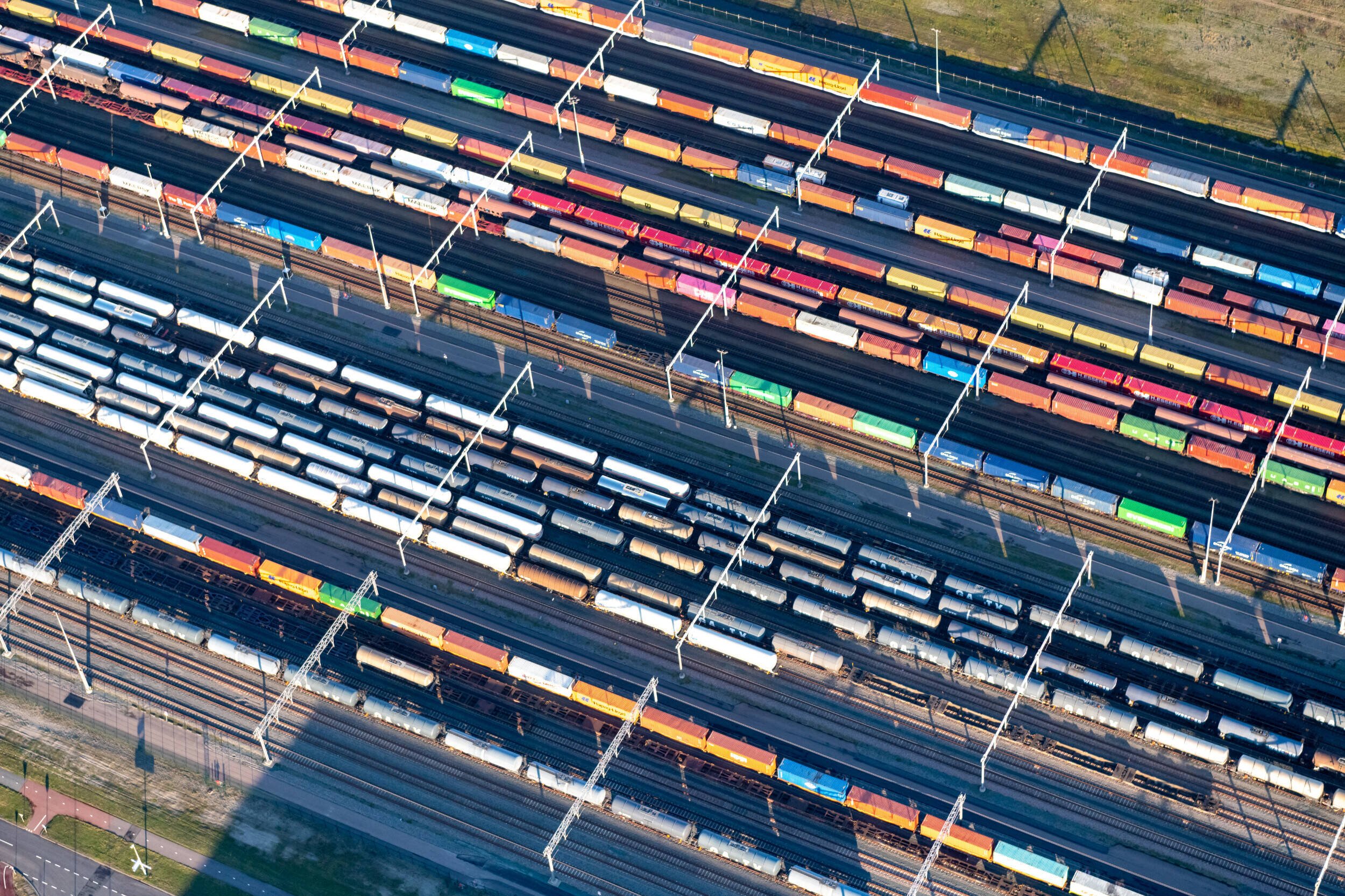Scroll down
Case study 3
Integrated rail planning is getting increasingly closer.
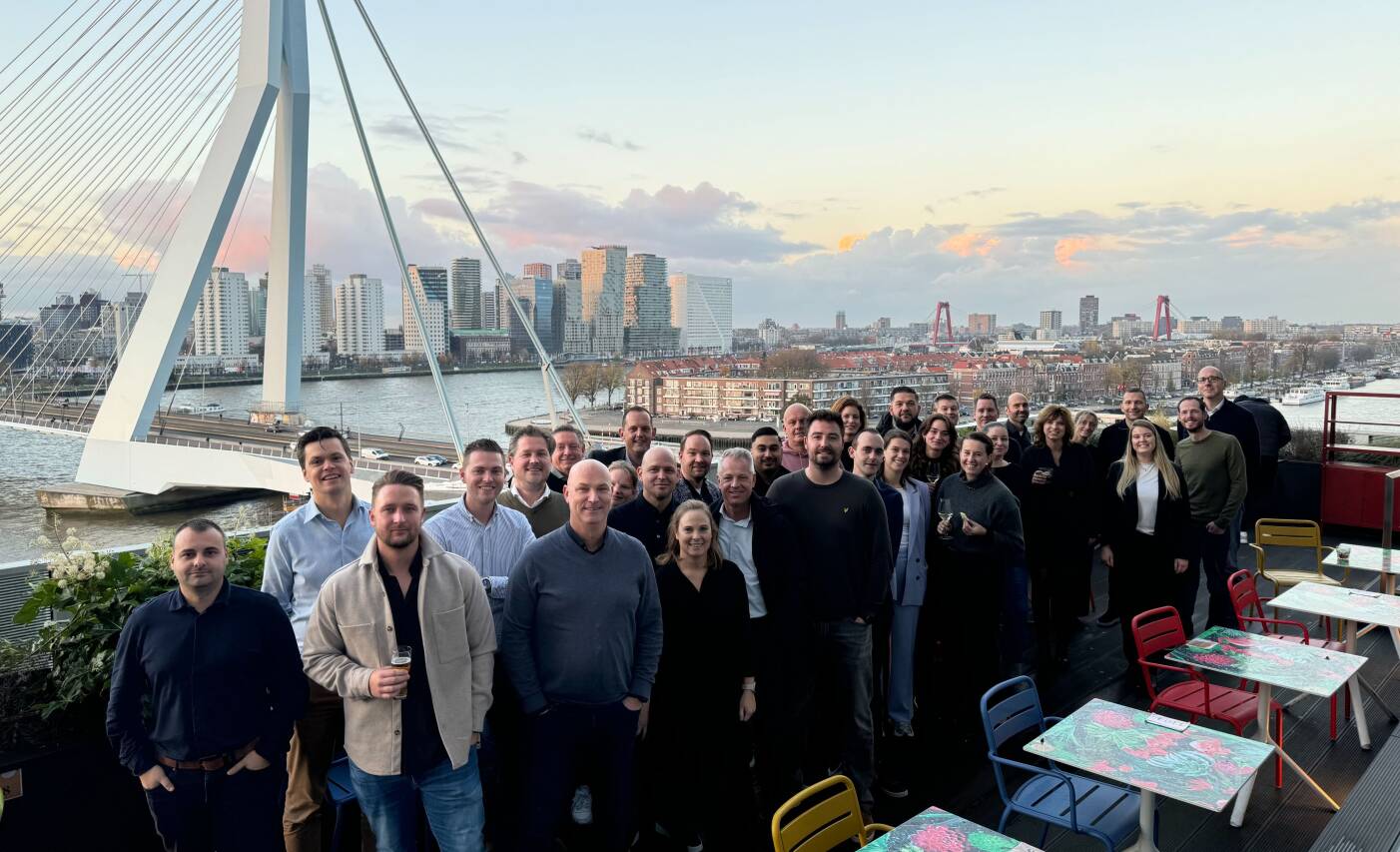
Train ETA
The year 2025 will mark the next phase, which is already in full preparation. Holleman: ‘We call it “Train ETA”, but essentially, we want to create a near real-time insight into where the trains are and when they are expected to arrive at their destination. For the so-called managed areas, RailNetEurope supplies us with the European data for infrastructure managers such as Prorail. Then we know when a train passes a station or border crossing, but it is essential that the expected departure time of the trains is included as accurately as possible. Technically, we expect the challenge to be smaller, but the focus is on the connection via an Application Programming Interface, or API.’
‘That would definitely benefit us and the entire sector," explains Malik Kermo, manager of Customer Service & Planning at Rail Force One. "The added value here is that better decisions can be made when one party has the overall view. This way, you know which train should be prioritiszed and which can wait a bit. We all gain from this.’
More dedicated capacity
Portbase expects to have the system fully live by 2026. For the insights gained in this phase to actually lead to better decisions about who is allowed to run and when, and thus prevent inefficiency, a coordinating party will be needed, points out Suzanne Smit, Program Manager on behalf of the Port of Rotterdam Authority. ‘We have already started a small working group for this purpose, which will identify where the bottlenecks lie.’ She re-emphasises that much has already been done and achieved in recent years and that there will be an acceleration in 2025. ‘At Portbase, more dedicated capacity is being made available for the rail product, initially for Train ETA, so that’s excellent news.’
‘We see the Train ETA route as a building block towards that point on the horizon: integrated rail planning,’ continues Rémon Kerkhof of Optimodal. ‘We know that rail freight transport can become much more efficient with a better use of resources. However, that does require everyone’s transparency, collaboration, and investments in time and money. Not everyone is equally enthusiastic about this, but I look at it from a community perspective. Ultimately, all parties in the sector benefit, and it is also socially relevant. You must keep that bigger picture in mind. Okay, it’s an investment of a few thousand euros right now but compare that to the millions of euros that we all book in train risk every year.’
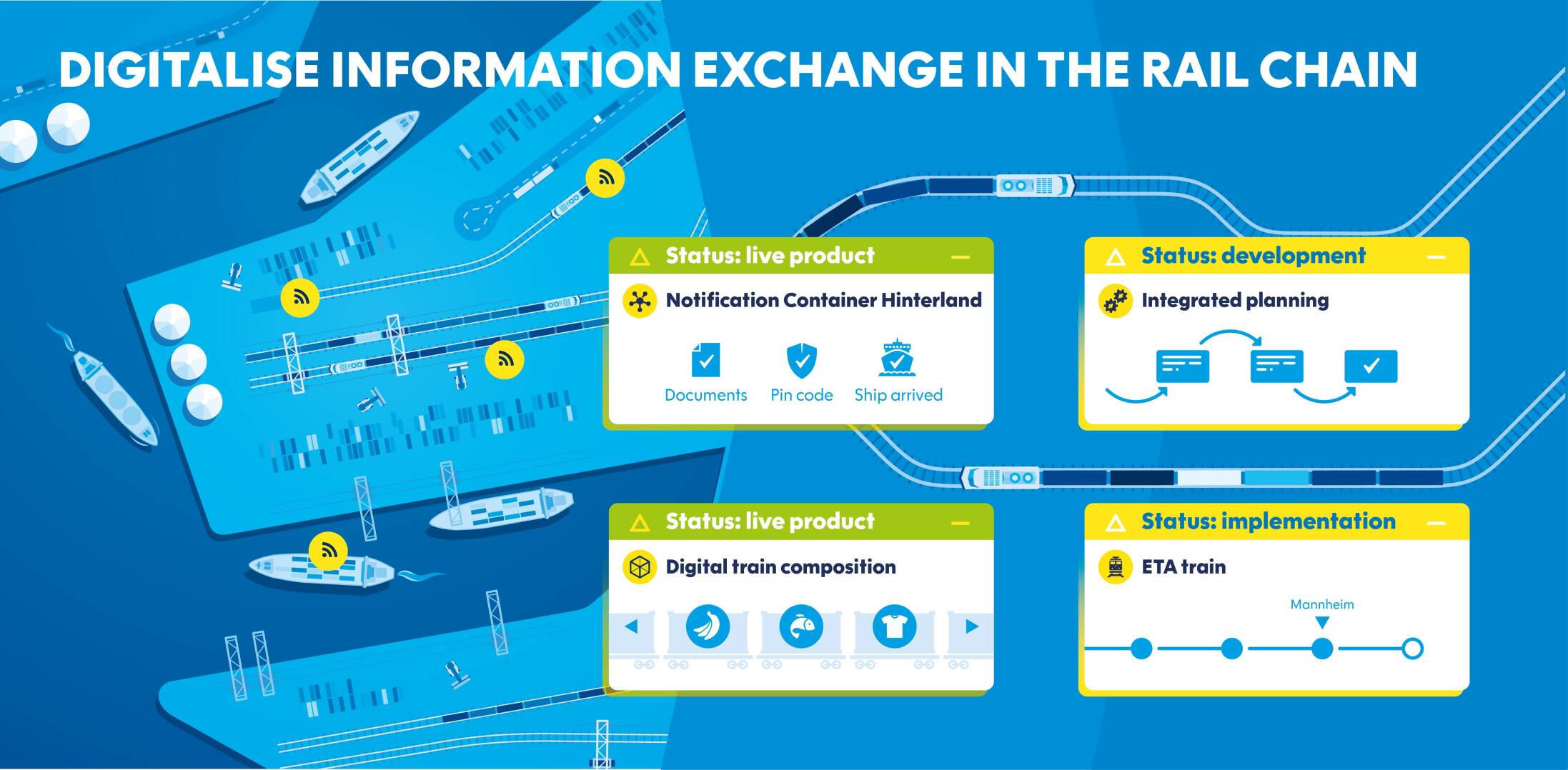
The aim is to use digitalisation to streamline the information exchange between carriers, rail operators and terminals, and to reduce manual operations. The first step was completed in 2022: the pre-notification of trains. Once a week, everyone digitally reports which trains will be running the following week. The functionality of Phase 2 – 'train composition' – has been live for testing since 1 October 2024. The functionality is now operational as of 1 April 2025. There is now digital clarity about the composition of the freight trains going to and from Rotterdam in terms of locomotive, carriages, and containers.
The ‘Rail Connected’ growth programme stems from the Rail Freight Transport Measures Package intended to stimulate freight transport by rail. The programme is financed 50-50 by the Ministry of Infrastructure and Water Management and the Port of Rotterdam Authority. The Port of Rotterdam Authority coordinates the programme that was designed in conjunction with market parties.
Download button
Bertschi and Rail Cargo Austria recently joined Rail Connected as the 25thand 26thparties. Together with APM Terminals Maasvlakte II, Combi Terminal Twente-Rotterdam, Contargo, DB Cargo Nederland, DistriRail, DP World Intermodal, ERS Railways, Hutchison Ports Europe Intermodal, Haeger & Schmidt Logistics, Hutchison Ports ECT Rotterdam, KombiRail Europe, Lineas, LTE Logistics & Transport, Neska Containerline, Optimodal, Portshuttle, Rail Force One, Raillogix, Rail Service Center Rotterdam, Rotterdam Rail Feeding, RTB Cargo, Rotterdam World Gateway, Cabooter Group and Trimodal Europe, the Rotterdam rail freight sector, active in container transport, is covered for approximately 90 per cent.
‘We have extensively tested the “train composition” route over the past months,’ explains Demi Holleman, Hinterland product owner at Portbase. ‘This resulted in a few minor adjustments, such as a different name for a download button, but nothing major. More than half the parties involved have since implemented the system. In recent months, PortShuttle and Rotterdam Rail Feeding have even been using the system in practice with ECT. It works well, that is why the functionality is operational now.’
‘This specific step does not have much added value for us, but it is a necessary stage on the way to the ultimate goal,’ says Rémon Kerkhof, deputy director at Optimodal, a logistics service provider focused on European container transport by water, rail and road. ‘We already had insight into the composition of our trains. Nevertheless, it has triggered us to see whether we can simplify our own business processes with the data that becomes available. We are still in the exploratory phase, but in this way, it is more useful than we initially thought.’
Own area
Malik Kermo of Rail Force One 'couldn't agree more'. ‘The days when we all worked in our own areas really need to come to an end. That is why I’m so pleased with this initiative. As a sector, we have stepped out of our comfort zone. We've never come this far before. Now we're really going to achieve something!’
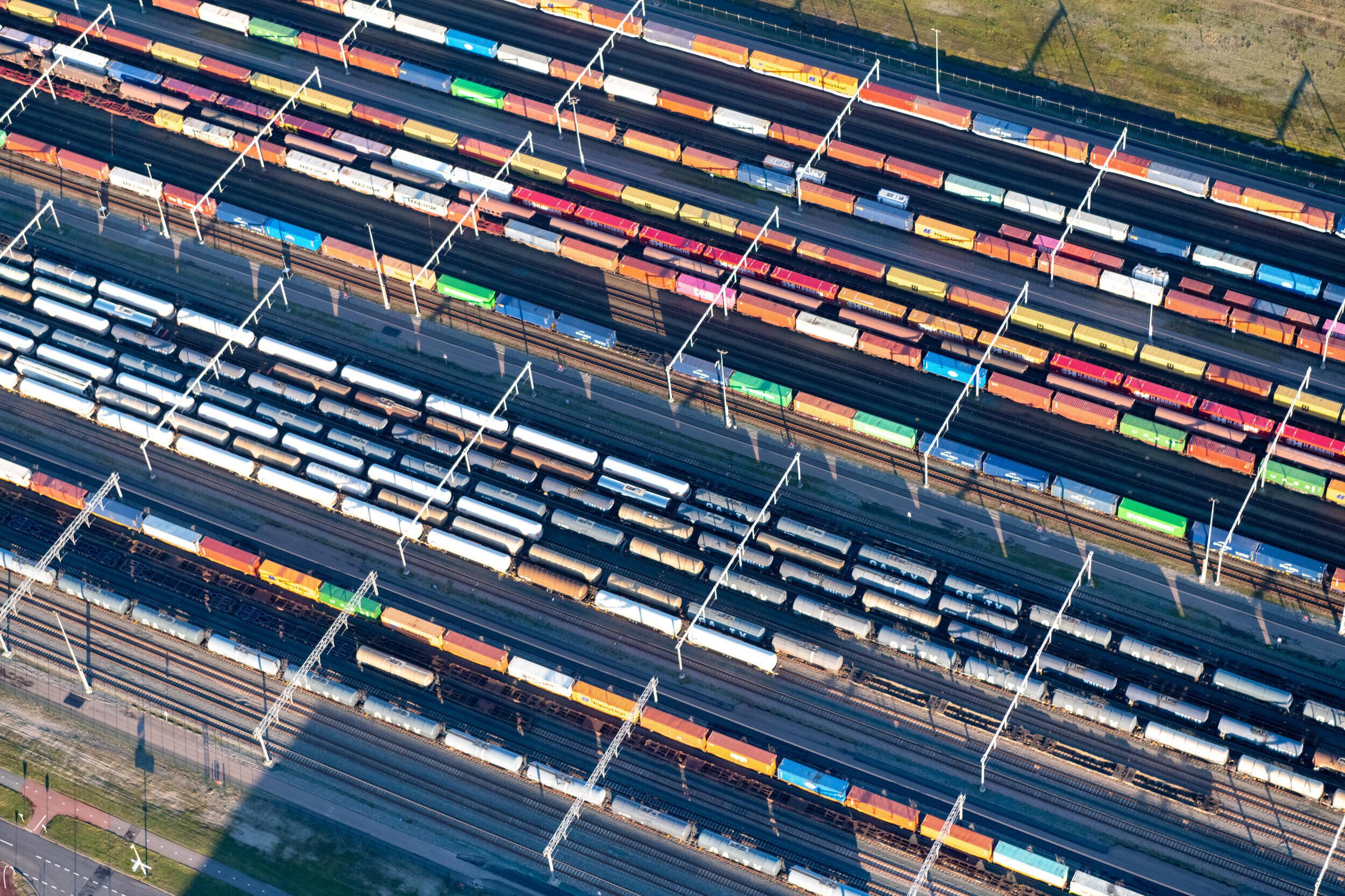

The 'Rail Connected' programme will enter its fourth year in 2025. Many small steps have been taken during that time, which have led to the completion of two major routes. The third major phase is expected to be completed next year, after which the 'holy grail' – integrated planning of rail freight transport to and from Rotterdam – will come into view. ‘Of course, you always want things to go faster, but we’re taking the right steps.’
Case study 3
Integrated rail planning is getting increasingly closer.
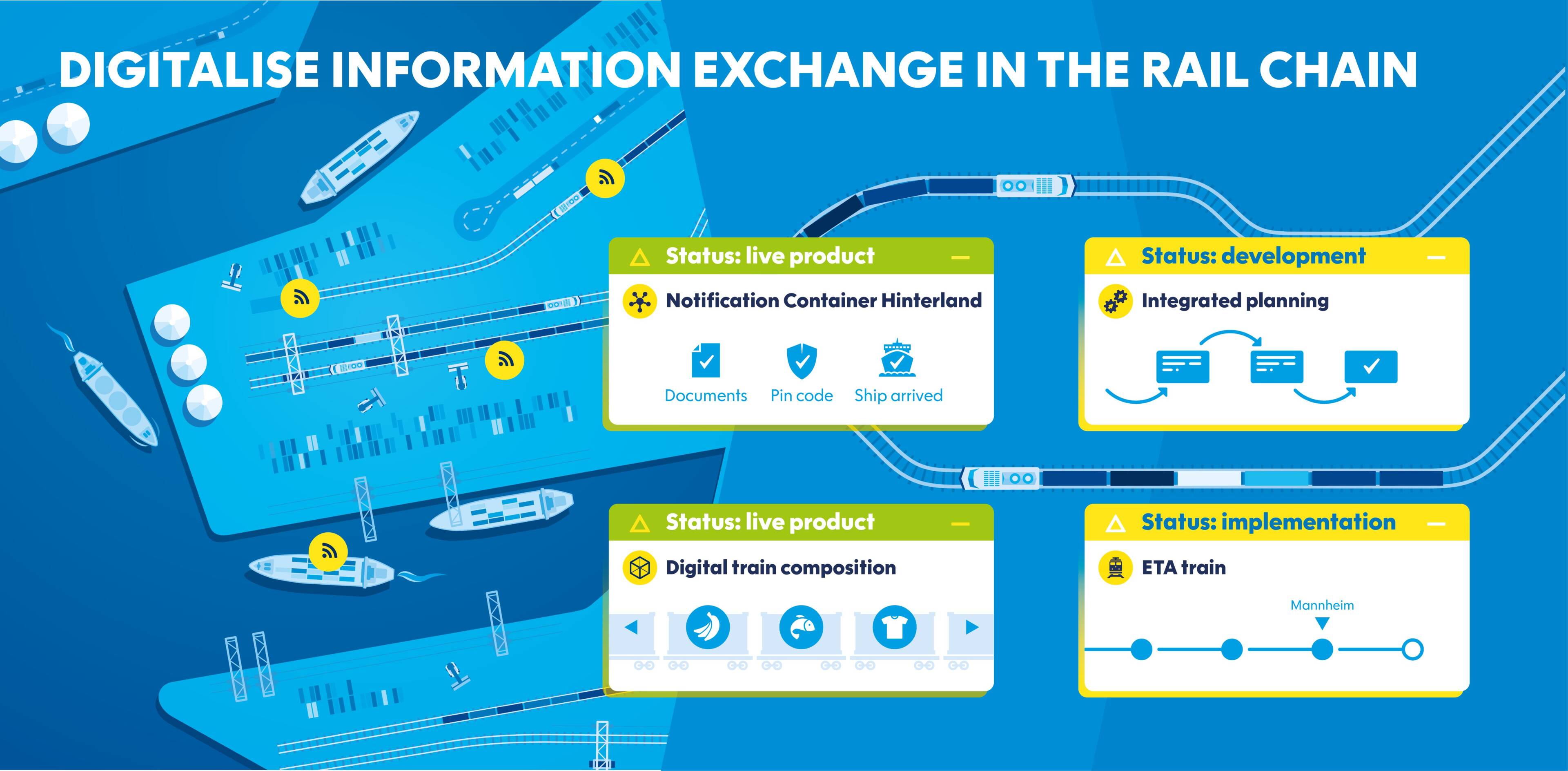
Train ETA
‘That would definitely benefit us and the entire sector," explains Malik Kermo, manager of Customer Service & Planning at Rail Force One. "The added value here is that better decisions can be made when one party has the overall view. This way, you know which train should be prioritiszed and which can wait a bit. We all gain from this.’
The year 2025 will mark the next phase, which is already in full preparation. Holleman: ‘We call it “Train ETA”, but essentially, we want to create a near real-time insight into where the trains are and when they are expected to arrive at their destination. For the so-called managed areas, RailNetEurope supplies us with the European data for infrastructure managers such as Prorail. Then we know when a train passes a station or border crossing, but it is essential that the expected departure time of the trains is included as accurately as possible. Technically, we expect the challenge to be smaller, but the focus is on the connection via an Application Programming Interface, or API.’
The aim is to use digitalisation to streamline the information exchange between carriers, rail operators and terminals, and to reduce manual operations. The first step was completed in 2022: the pre-notification of trains. Once a week, everyone digitally reports which trains will be running the following week. The functionality of Phase 2 – 'train composition' – has been live for testing since 1 October 2024. The functionality is now operational as of 1 April 2025. There is now digital clarity about the composition of the freight trains going to and from Rotterdam in terms of locomotive, carriages, and containers.
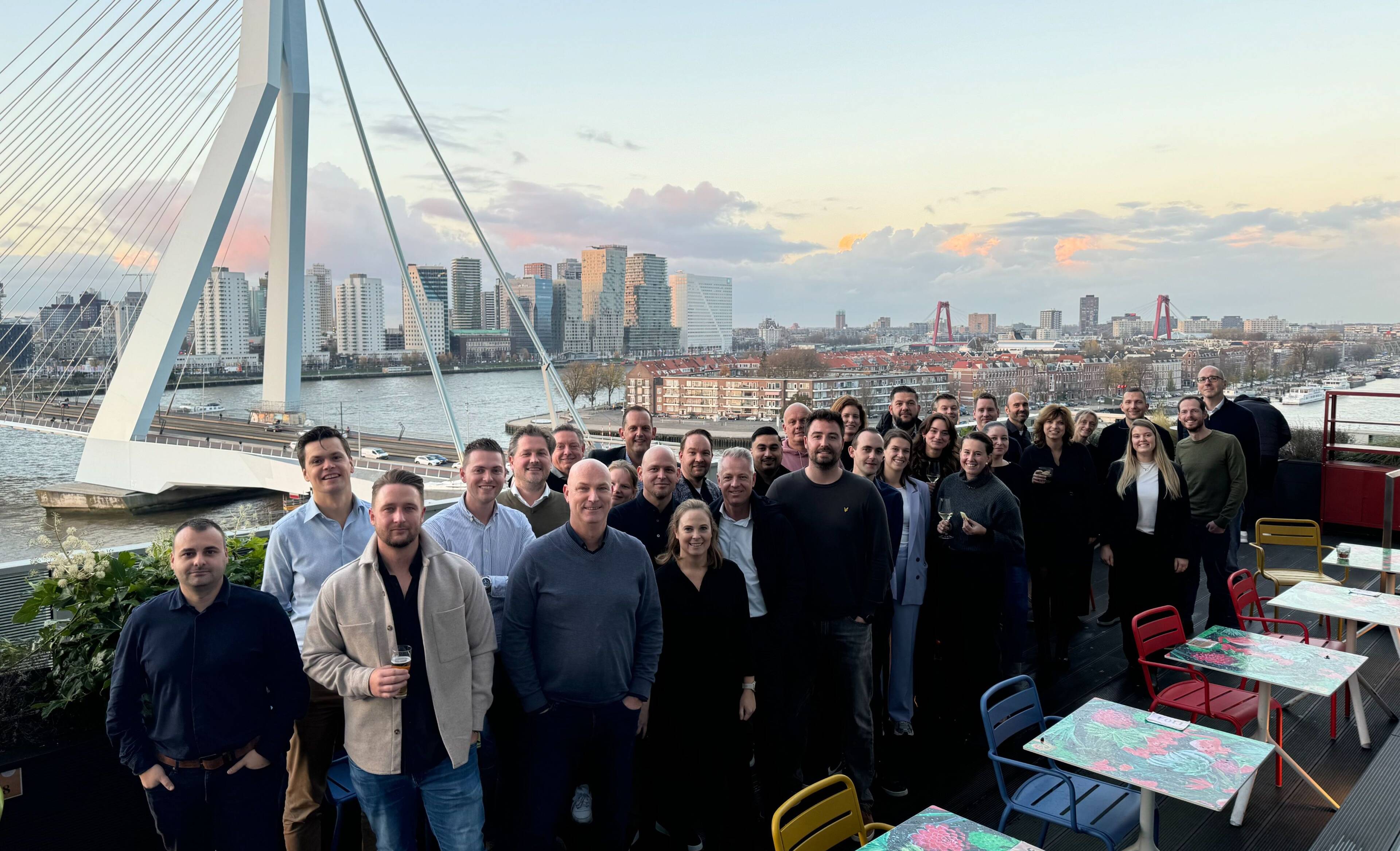
Bertschi and Rail Cargo Austria recently joined Rail Connected as the 25thand 26thparties. Together with APM Terminals Maasvlakte II, Combi Terminal Twente-Rotterdam, Contargo, DB Cargo Nederland, DistriRail, DP World Intermodal, ERS Railways, Hutchison Ports Europe Intermodal, Haeger & Schmidt Logistics, Hutchison Ports ECT Rotterdam, KombiRail Europe, Lineas, LTE Logistics & Transport, Neska Containerline, Optimodal, Portshuttle, Rail Force One, Raillogix, Rail Service Center Rotterdam, Rotterdam Rail Feeding, RTB Cargo, Rotterdam World Gateway, Cabooter Group and Trimodal Europe, the Rotterdam rail freight sector, active in container transport, is covered for approximately 90 per cent.
Download button
‘We have extensively tested the “train composition” route over the past months,’ explains Demi Holleman, Hinterland product owner at Portbase. ‘This resulted in a few minor adjustments, such as a different name for a download button, but nothing major. More than half the parties involved have since implemented the system. In recent months, PortShuttle and Rotterdam Rail Feeding have even been using the system in practice with ECT. It works well, that is why the functionality is operational now.’
‘This specific step does not have much added value for us, but it is a necessary stage on the way to the ultimate goal,’ says Rémon Kerkhof, deputy director at Optimodal, a logistics service provider focused on European container transport by water, rail and road. ‘We already had insight into the composition of our trains. Nevertheless, it has triggered us to see whether we can simplify our own business processes with the data that becomes available. We are still in the exploratory phase, but in this way, it is more useful than we initially thought.’
The 'Rail Connected' programme will enter its fourth year in 2025. Many small steps have been taken during that time, which have led to the completion of two major routes. The third major phase is expected to be completed next year, after which the 'holy grail' – integrated planning of rail freight transport to and from Rotterdam – will come into view. ‘Of course, you always want things to go faster, but we’re taking the right steps.’
Own area
Malik Kermo of Rail Force One 'couldn't agree more'. ‘The days when we all worked in our own areas really need to come to an end. That is why I’m so pleased with this initiative. As a sector, we have stepped out of our comfort zone. We've never come this far before. Now we're really going to achieve something!’
More dedicated capacity
Portbase expects to have the system fully live by 2026. For the insights gained in this phase to actually lead to better decisions about who is allowed to run and when, and thus prevent inefficiency, a coordinating party will be needed, points out Suzanne Smit, Program Manager on behalf of the Port of Rotterdam Authority. ‘We have already started a small working group for this purpose, which will identify where the bottlenecks lie.’ She re-emphasises that much has already been done and achieved in recent years and that there will be an acceleration in 2025. ‘At Portbase, more dedicated capacity is being made available for the rail product, initially for Train ETA, so that’s excellent news.’
‘We see the Train ETA route as a building block towards that point on the horizon: integrated rail planning,’ continues Rémon Kerkhof of Optimodal. ‘We know that rail freight transport can become much more efficient with a better use of resources. However, that does require everyone’s transparency, collaboration, and investments in time and money. Not everyone is equally enthusiastic about this, but I look at it from a community perspective. Ultimately, all parties in the sector benefit, and it is also socially relevant. You must keep that bigger picture in mind. Okay, it’s an investment of a few thousand euros right now but compare that to the millions of euros that we all book in train risk every year.’
